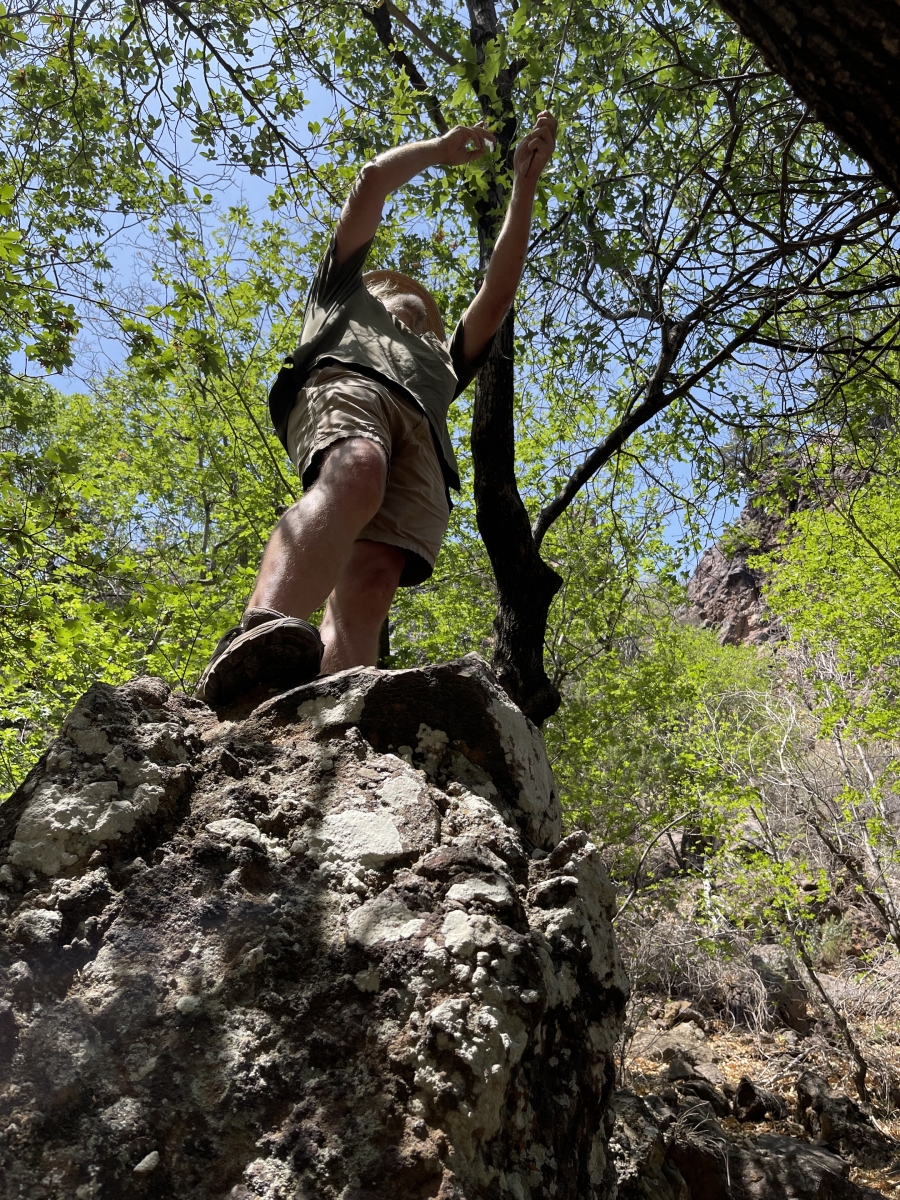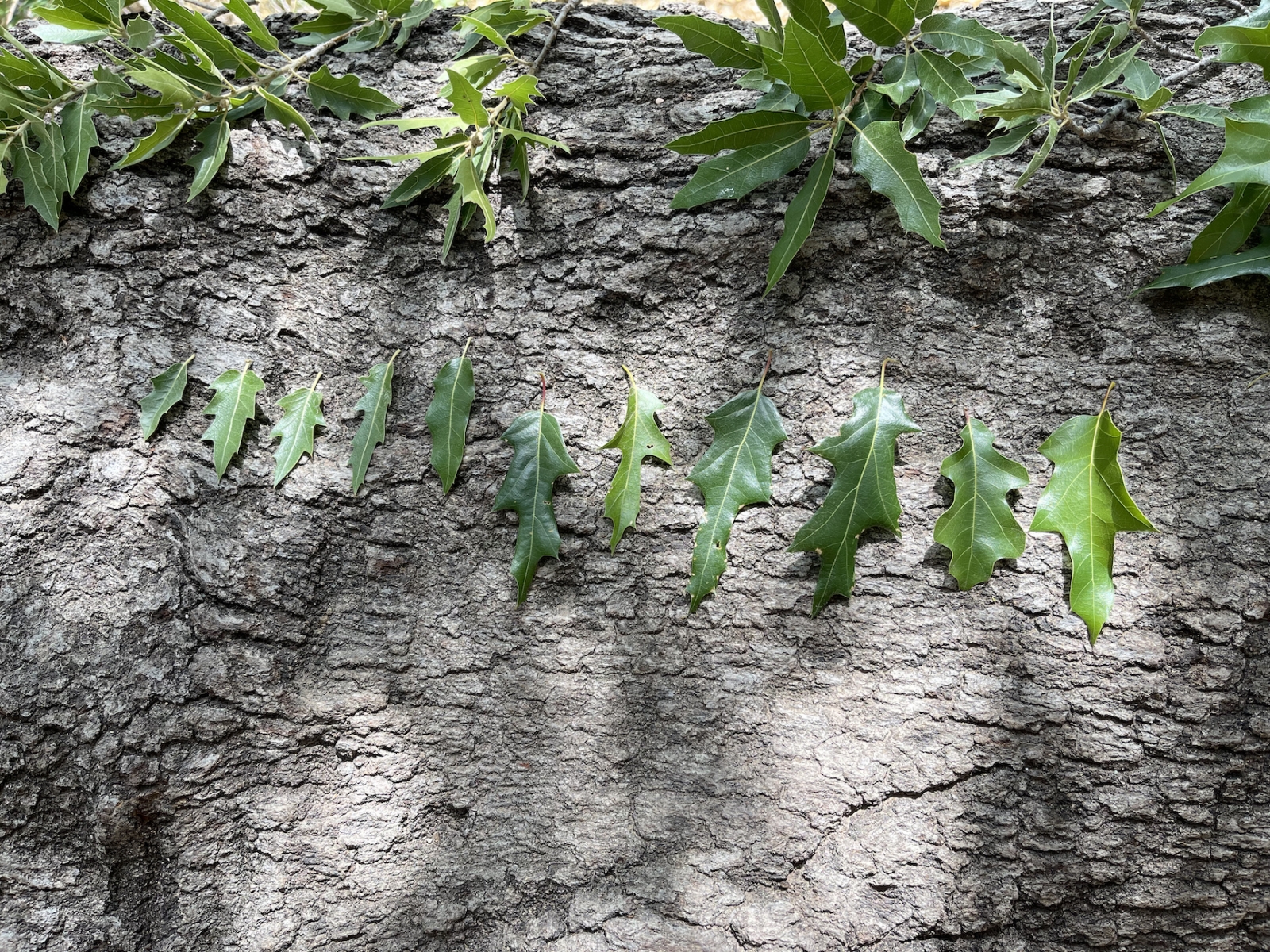 Aug. 3, 2021—The Morton Arboretum and United States Botanic Garden (USBG) announce a new partnership to advance the conservation of threatened trees in the United States, with a special focus on native oak species. The partners will develop threat assessments, conduct field work to resolve taxonomic questions and collect seeds for planting in conservation collections, and advance the work of the Global Conservation Consortium for Oak (GCCO).
Aug. 3, 2021—The Morton Arboretum and United States Botanic Garden (USBG) announce a new partnership to advance the conservation of threatened trees in the United States, with a special focus on native oak species. The partners will develop threat assessments, conduct field work to resolve taxonomic questions and collect seeds for planting in conservation collections, and advance the work of the Global Conservation Consortium for Oak (GCCO).
The partners are also working closely with Botanic Gardens Conservation International (BGCI) and NatureServe to identify and evaluate the extinction risk and conservation status of all trees in the continental U.S. to inform conservation priorities and actions. Oaks, one of the most ecologically and culturally important groups of trees in the U.S., will be a top priority for the partnership. The Red List of Oaks 2020 revealed that 31% of the world’s oaks, which are crucial to the environments in which they grow, are threatened with extinction.
“Preventing extinction of native U.S. oak species is a key tenet of The Morton Arboretum’s work,” said Murphy Westwood, Ph.D., vice president of science and conservation at the Arboretum. “With the support and partnership of the United States Botanic Garden, we will make great strides in setting conservation priorities and taking informed action to save these important trees,” she added.
The Arboretum and USBG will work with collaborators to take action in the highest priority regions of conservation concern, including southwest Texas, which Westwood noted is an oak diversity hotspot of complex, interbreeding oak species. The area is home to three of the top five most vulnerable species of oak, according to the Conservation Gap Analysis of Native U.S. Oaks, and represents a large knowledge gap in oak phylogenetics and evolution. Researchers will conduct fieldwork to attempt to locate rare and presumed extinct species and collect samples for molecular analysis to gain a greater understanding of their taxonomy and how to conserve genetic diversity of native, threatened oaks.
“We are very pleased to partner with The Morton Arboretum on the conservation of these exceptional species, and especially those in southwest Texas that are so vulnerable,” said Saharah Moon Chapotin, Ph.D., executive director of the USBG. “Oaks are a keystone plant in many of our native ecosystems and important to the health of hundreds of plant and animal species.”
Both partners will continue to collaborate under the umbrella of the GCCO, led by the Arboretum in partnership with BGCI, which seeks to create a global conservation network of institutions developing collaborative strategies to protect threatened oaks. The GCCO is developing living conservation collections of threatened species around the world, including at USBG. Both the Arboretum and the USBG will grow a collection of oaks as an active conservation measure, since the seeds cannot be stored in seed banks.
###
Online folder of images:
https://www.dropbox.com/sh/pk2vqmqpd5g3dwx/AABsKL3evtNXqCLp7chzvhYca?dl=0
Media Contacts:
Tyler Prich, Media Relations Specialist, The Morton Arboretum, tprich@mortonarb.org
Devin Dotson, Public Affairs Specialist, United States Botanic Garden, devin.dotson@aoc.gov
About The Morton Arboretum
The Morton Arboretum is an internationally recognized tree-focused botanical garden and research center near Chicago in Lisle, Illinois. Its 1,700 acres include specialty tree and plant collections, 9 miles of roads and 16 miles of hiking trails, a Children’s Garden, educational programs and a Visitor Center. Information about exhibitions, events and admission is available at mortonarb.org.
About United States Botanic Garden
The United States Botanic Garden (USBG) is the oldest continuously operating public garden in the United States. The Garden informs visitors about the importance and fundamental value and diversity of plants, as well as their aesthetic, cultural, economic, therapeutic, and ecological significance. With over a million visitors annually, the USBG strives to demonstrate and promote sustainable practices. The U.S. Botanic Garden is a living plant museum accredited by the American Alliance of Museums and Botanic Gardens Conservation International. www.USBG.gov
